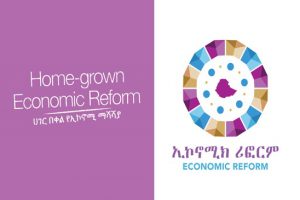
The recently released United Nations Development Program (UNDP) 2019 Multi dimensional Poverty Index (MPI) report stated that from 5.6 billion world population, which is 76 percent of the global population comprising under the study, over 1.3 billion people live under multi dimensional poverty in 101 countries.
The focus of MPI is beyond income as the sole indicator of poverty, by exploring how people experience poverty in their health, education, and standards of living, according to the recent statement of UNDP.
According to the report from the 1.3 billion people who live under multidimensional poverty, one-third, that is 886 million people are found in middle-income countries while 440 million in low-income countries.
The report also stated that worldwide, one in three children is found multi dimensionally poor, compared to one in six adults. This means that half of the people living in multidimensional poverty -663 million are children with the youngest children bearing the greatest burden, the findings of the report disclosed.
Health, education, and standard of living are the dimensions of the report by selecting 10 poverty indicators with global standards similarly for all countries, developed and developing, middle and low-income countries.
During the press statement here in Addis Ababa last week, UNDP Country Representative for Ethiopia Turhan Saleh stated that in the eye of 2019 the MPI report, Ethiopia shows
good improvements in reducing multi dimensional poverty in all indicators from 2011 to 2016.
Even though the country’s efforts have extricated millions out of the multi dimensional poverty line, still tens of millions are found under that situation and the country needs strong and proper policies and continuously developing social investment to end poverty, Saleh noted.
The country’s campaign against poverty and the fast economic growth helps the country to reduce multi dimensional poverty of its people, although a lot remains to do especially to address cooking fuel, sanitation, housing and access to energy problems of the society with fast and consistently continuous investment in the sectors.
He added that boosting its strong efforts on responding to the effectiveness of Sustainable Develop ment Goals (SDS) is also a means to challenge multi dimensional poverty.
UNDP’s National Economist, Haile Kibret on his part said in the first place, the indicators of the findings of MPI are global standard and the same for all countries without any difference. According to him although the criteria are internationally accepted, it must consider the nature, feature and economic background of countries than making the same qualifications for all countries.
Hence, multi dimensional poverty indicators should define based on the context and circumstance of countries to get proper data than taking similar criteria for all countries.
Since the unit of analysis is household-based, MPI should customize the context of countries than evaluating with similar criteria for agriculture-based and industrial nations. According to Haile, for example, if an adult from a member of five families in a household does not reach at least grade five, the household gets zero in a year of schooling even the rest of four family members are doctors and professors.
Hence, in this kind of heavy criteria of multidimensional poverty measurement, it is difficult to meet the criteria in agricultural societies. Meanwhile, Haile stated that UNDP Ethiopia is also communicating with the government to customize MPI.
According to him the findings of the report can help countries to boost their investment in the social sectors and to implement proper policies to fight multi dimensional poverty.
The report may become as best policy instrument for countries and Ethiopia will also benefit from the report to define strict policy directions and to invest in the gaps which show little changes on the indicators as a country which put poverty as its first enemy and gives strong concern to eliminate it from the country.
The focused criteria of the research are nutrition, child mortality, years of schooling, drinking water, living standard, cooking fuel, sanitation, housing, energy access and asset holding for all countries.
Haile noted that although the criteria are equal for all industrial, agricultural-based, middle-income and low-income countries, Ethiopia shows encouraging improvements in reducing multidimensional poverty in all states from 2011 to 2016, according to the findings of the research.
In this case, Ethiopia shows encouraging improvements in reducing all indicators and the intensity of poverty is also dropped, he stated.
Meanwhile, Haile noted that multi dimensional poverty is not only reducing in Ethiopia, but it is also among the list of highest multidimensional poverty-reducing countries. It is an exemplary good story in reducing poverty especially in the social sector in health, nutrition, and education which also initiate the country for further investments for more positive outcomes in challenging poverty.
Reducing child mortality, nutrition problems, year of schooling, drinking water, and living standard are among the highly reduced problems by Ethiopia according to the MPI report, he noted.
According to him the shown improvement in poverty-reducing in Ethiopia is in all indicators, the improvement is fast and in a short period, poverty reduction is also shown in all its states (all corners of the country), yet still, in Somali State, the rate of reducing is slow.
Citing the report Haile stated that the progress in reducing multi dimensional poverty is being held back by rapid population growth, the biggest difference between multidimensional poverty and income poverty, no or little correlations between inequality and multi dimensional poverty index, high rural area multi dimensional poverty, almost 90 percent children under 10 are found multi dimensionally poor.
According to the report, countries should enact proper policies, fast and consistently social investment, better response to address Sustainable Development Goals (SDS) to end poverty in all its forms.
The Ethiopian Herald July 20/2019
BY DARGIE KAHSAY





